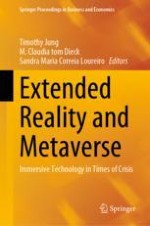This book features the latest research in the area of immersive technologies as presented at the 7th International Extended Reality (XR) Conference, held in Lisbon, Portugal in 2022.
Bridging the gap between academia and industry, it showcases the latest advances in augmented reality (AR), virtual reality (VR), extended reality (XR) and metaverse and their applications in various sectors such as business, marketing, retail, education, healthcare, tourism, events, fashion, entertainment, and gaming.
The volume gathers selected research papers by prominent AR, VR, XR and metaverse scholars from around the world. Presenting the most significant topics and latest findings in the fields of augmented reality, virtual reality, extended reality and metaverse, it will be a valuable asset for academics and practitioners alike.
